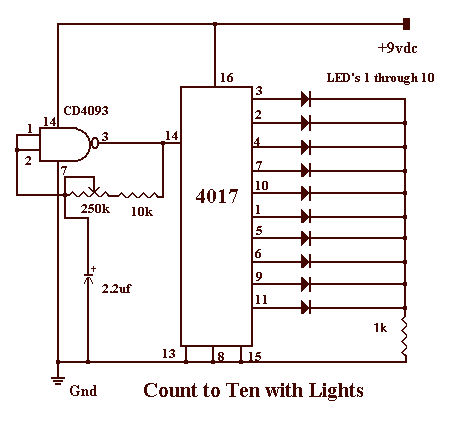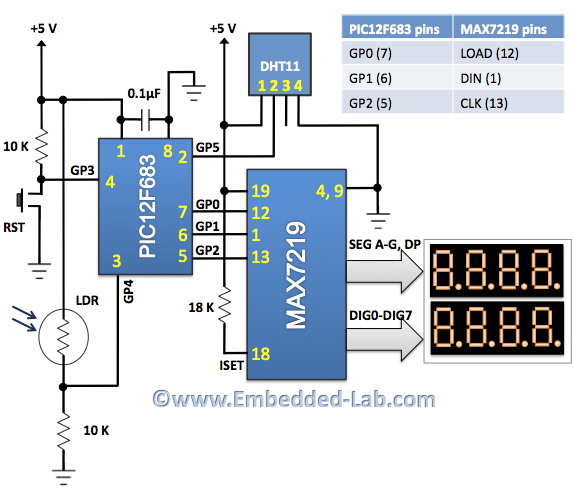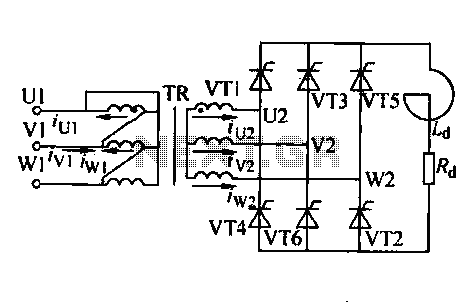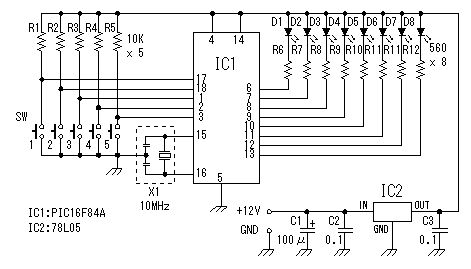
2 LED Flasher
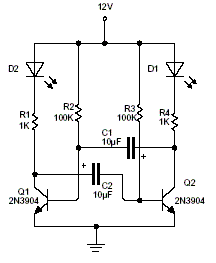
This is a 2 LED flashing circuit. It is based on an analog flip flop circuit. This particular circuit was calculated to use blue or white 3V LED with a 12V power supply. If you are using red green or yellow LED, replace the 1K resistors for a 2.2K. This circuit will flash the led at a 1 sec interval in alternance. For faster or slower flashing speed, you can increase or decrease the 100K resistors.
The described circuit utilizes an analog flip-flop configuration to achieve a dual LED flashing effect. The primary components include two light-emitting diodes (LEDs), a power supply, and resistors that influence the flashing frequency. The circuit is designed to operate with a 12V power supply, making it suitable for various applications where a higher voltage is available.
For the LEDs, the circuit is optimized for blue or white 3V types. When using these LEDs, the circuit includes 1K ohm resistors to limit the current and ensure safe operation. If alternative LED colors such as red, green, or yellow are employed, the resistors should be increased to 2.2K ohms. This adjustment compensates for the different forward voltage drops associated with these colors, providing the necessary current regulation.
The flashing interval of approximately 1 second is a result of the timing components in the flip-flop circuit, specifically the 100K ohm resistors. Altering these resistors will modify the charge and discharge time of the timing capacitor, thereby adjusting the flashing speed of the LEDs. Decreasing the resistance will lead to a faster flashing rate, while increasing it will result in a slower flashing rate.
Overall, this circuit is an effective demonstration of basic flip-flop operation and LED control, suitable for educational purposes or practical applications requiring visual indicators. Proper attention to component values and LED types will ensure reliable performance throughout its operational lifespan.This is a 2 LED flashing circuit. It is based on an analog flip flop circuit. This particular circuit was calculated to use blue or white 3V LED with a 12V power supply. If you are using red green or yellow LED, replace the 1K resistors for a 2.2K. This circuit will flash the led at a 1 sec interval in alternance. For faster or slower flashing speed, you can increase or decrease the 100K resistors. 🔗 External reference
The described circuit utilizes an analog flip-flop configuration to achieve a dual LED flashing effect. The primary components include two light-emitting diodes (LEDs), a power supply, and resistors that influence the flashing frequency. The circuit is designed to operate with a 12V power supply, making it suitable for various applications where a higher voltage is available.
For the LEDs, the circuit is optimized for blue or white 3V types. When using these LEDs, the circuit includes 1K ohm resistors to limit the current and ensure safe operation. If alternative LED colors such as red, green, or yellow are employed, the resistors should be increased to 2.2K ohms. This adjustment compensates for the different forward voltage drops associated with these colors, providing the necessary current regulation.
The flashing interval of approximately 1 second is a result of the timing components in the flip-flop circuit, specifically the 100K ohm resistors. Altering these resistors will modify the charge and discharge time of the timing capacitor, thereby adjusting the flashing speed of the LEDs. Decreasing the resistance will lead to a faster flashing rate, while increasing it will result in a slower flashing rate.
Overall, this circuit is an effective demonstration of basic flip-flop operation and LED control, suitable for educational purposes or practical applications requiring visual indicators. Proper attention to component values and LED types will ensure reliable performance throughout its operational lifespan.This is a 2 LED flashing circuit. It is based on an analog flip flop circuit. This particular circuit was calculated to use blue or white 3V LED with a 12V power supply. If you are using red green or yellow LED, replace the 1K resistors for a 2.2K. This circuit will flash the led at a 1 sec interval in alternance. For faster or slower flashing speed, you can increase or decrease the 100K resistors. 🔗 External reference
